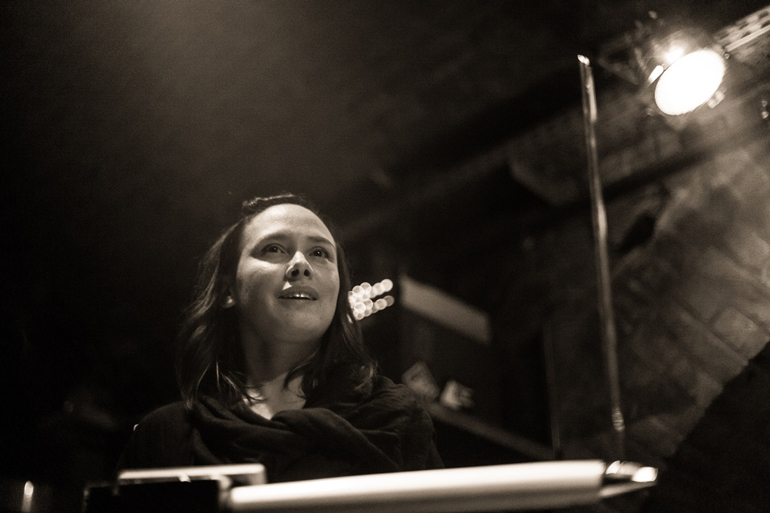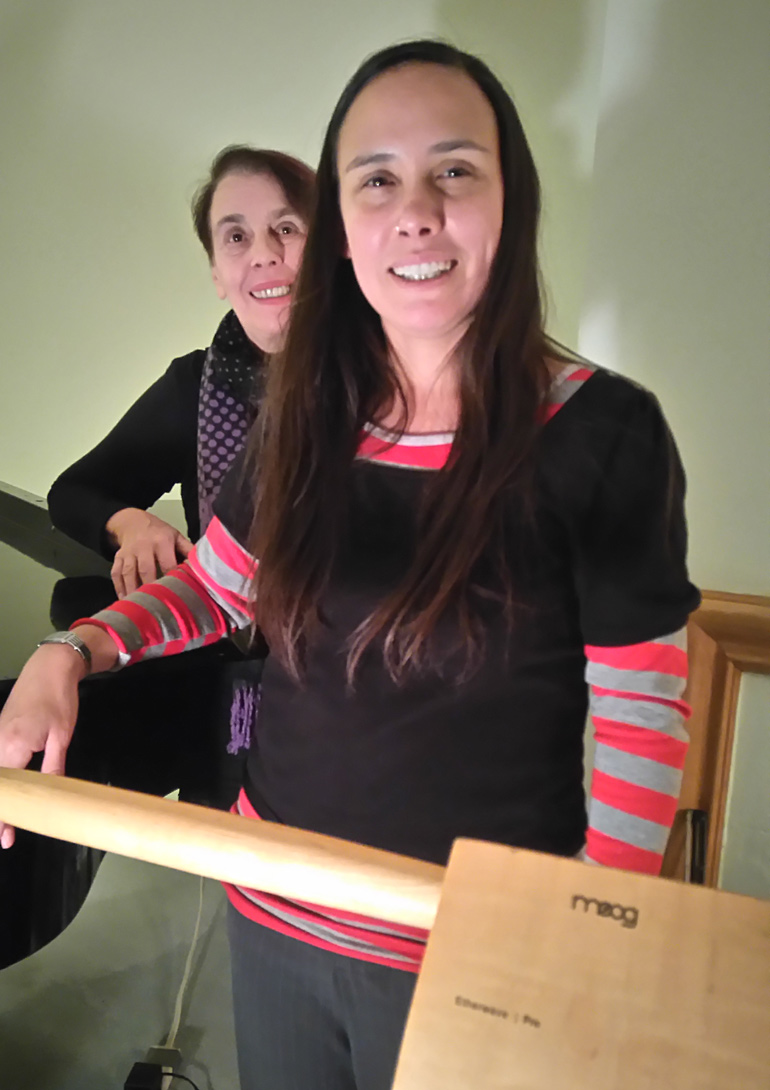
The Day the Earth Stood Still. The Bride of Frankenstein. The Thing From Another World. All memorable films for many reasons, including the use of the theremin, the electromagnetic-field-generating apparatus invented in 1920 by Léon Theremin and unfairly associated with science fiction (or, in the case of The Lost Weekend, total drunkenness) since approximately the middle of the 20th century.
But this distinctive instrument – the only one that entails no physical contact with the performer – has its concert-hall champions, among whom we may count Alexander Rapoport, whose Sonata for Theremin and Piano will receive its Canadian premiere Monday evening at that west-end clearing house of musical innovation, Gallery 345.
The world premiere took place in 2012 in Vienna, where this professor of composition at the University of Toronto was trained and where the performers, thereminist Pamelia Stickney and pianist Marie-Theres Rauba, reside.
“The instrument has a range comparable to that of the piano, and a wide variety of colours are available through the manipulation of the signal,” Rapoport says of the theremin. “Writing for it is not at all a hardship. It is a privilege and a delight.”
Attempts to describe the plaintive sound of the theremin, often adorned with vibrato, usually involve comparison with the cello and violin. Rauba suggests adding the human voice to the equation.
Stickney prefers to avoid comparisons. “Instruments do not make music, people do,” she says, quoting the conductor Max Rudolf.
Born in Los Angeles in 1976 and given the piano basics by her mother, Stickney caught the theremin bug after watching Theremin: An Electronic Odyssey, the 1994 documentary by Steven M. Martin that tells the tale of its Russian creator, a physicist who also invented the motion detector and (after his possibly forced repatriation from the United States to the Soviet Union) a distance-surveillance device much prized by the Soviet secret police.

“I just had to play that instrument,” Stickney recalled. She managed to meet Martin, connect with the synthesizer pioneer Robert Moog (also a theremin builder) and visit Clara Rackmore, the theremin’s most famous performer, who died in 1998 at age 87.
Self-trained as a cellist and pianist and selectively enamoured of the canon – the delicate first Intermezzo of Brahms’s Op. 119 piano collection is a personal favourite – Stickney has also done much ensemble work in the popular and jazz realms. She lists on her résumé recording sessions with David Byrne, Foetus, Grace Jones, Barbez and Bela Fleck & the Flecktones.
A few days ago she played (with her fellow thereminist Dalit Warshaw) at the Stone, the progressive room in the East Village neighbourhood in New York administered by John Zorn. In Vienna Stickney is part of an alternative trio called Blueblut (its prodigious repertoire of tags: jazz, power metal, art music, art rock, improvised music, indiepop, industrial rock, jazz and improvised music, jazz-funk, Vienna).
The Gallery 345 program, apart from some improvisations, is classical. The Berceuse from Stravinsky’s The Firebird, Messiaen’s Vocalise-Étude, Debussy’s Jeux d’eau and excerpts from Ravel’s Don Quichotte à Dulcinée are among the promised offerings.
As one might imagine, arrangements dominate theremin repertoire. Stickney has derived inspiration from the many arrangements for violin Jascha Heifetz used to play. This evening is unusual in including a three-movement score – Rapoport’s – written specifically for the instrument.
The theremin looks simple enough: a box with some knobs and two oscillators and two antennas, one governing pitch, the other volume, each controlled by the proximity of the performer’s hand. The loop attends to volume (the farther, the louder) and the straight rod, pitch (the closer, the higher).
Performance is a game of millimetres. Much of the music-making results from slight quivers of the fingers. Normally the left hand is the volume regulator. Stickley, as a southpaw, reverses the orientation (on a mirror-image Moog instrument).
Body language has no place in performance. Unlike the violinist, cellist, pianist, clarinetist or vocalist, the thereminist must maintain a statuesque posture, keeping the head steady, since any movement in the vicinity of the electronic field will alter the sound. Forget about a page turner. Stickland partakes of massage therapy to keep limber between bolt-upright rehearsals and performances.
The theremin once had a heyday, as its namesake demonstrated the instrument to packed houses in the 1920s. Rockmore, in the following decade, established its musicality. This performer (like Theremin, a Soviet expatriate) often toured with the celebrated bass Paul Robeson.
Will the instrument enjoy a classical revival almost a century after its invention? Hearing an experienced thereminist play a serious new work is the best way to formulate an answer.
Theremin Meets Piano takes place Monday at 8 at Gallery 345, 345 Sorauren Ave. Tickets cost $15 or $10 for students. More details here.
[Corerction, January26,2016 | The original article incorrectly stated Clara Rockmore’s name as “Blackmore”.]
#LUDWIGVAN
Want more updates on Toronto-centric classical music news and review before anyone else finds out? Get our exclusive newsletter here and follow us on Facebook for all the latest.
- SCRUTINY | Moussa Concerto Sounds Strong In Toronto Symphony Orchestra Premiere, Paired With Playful Don Quixote - April 4, 2024
- SCRUTINY | Esprit Orchestra At Koerner Hall: Ligeti 2, Richter No Score - April 1, 2024
- SCRUTINY | Sibelius & New Cello Concerto By Detlev Glanert Offers A Mixed Bag From The TSO - March 28, 2024



